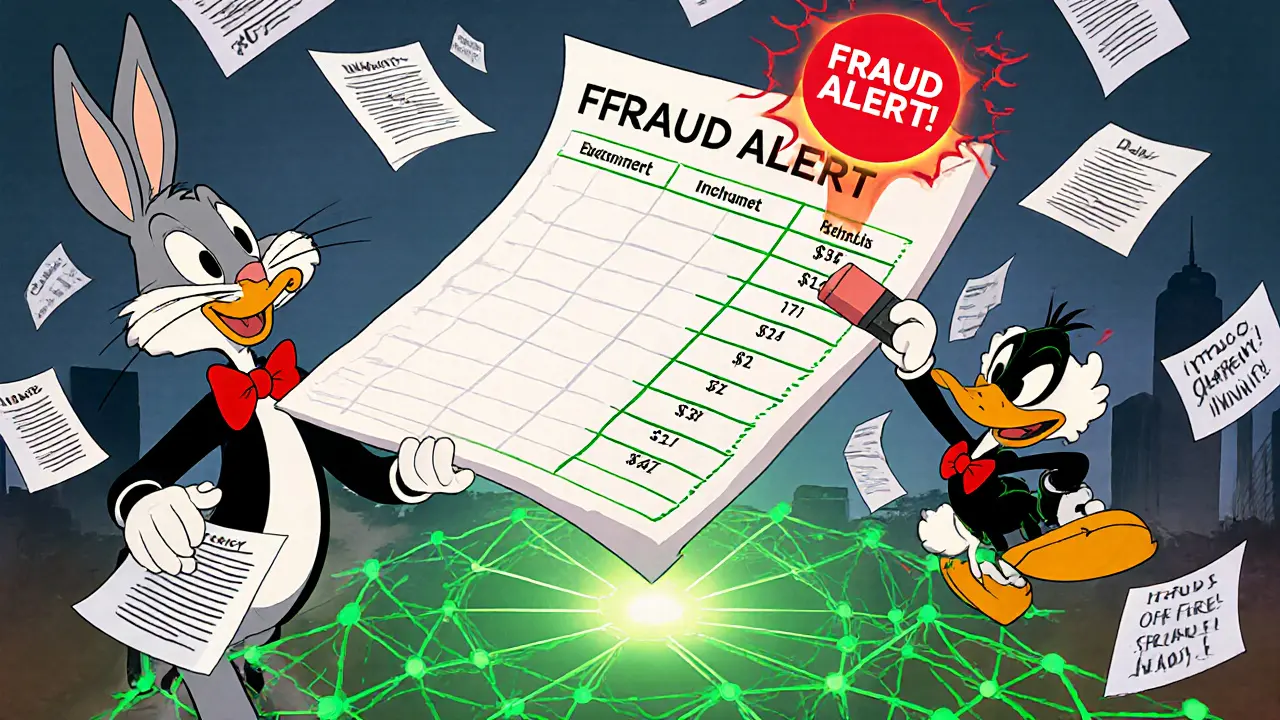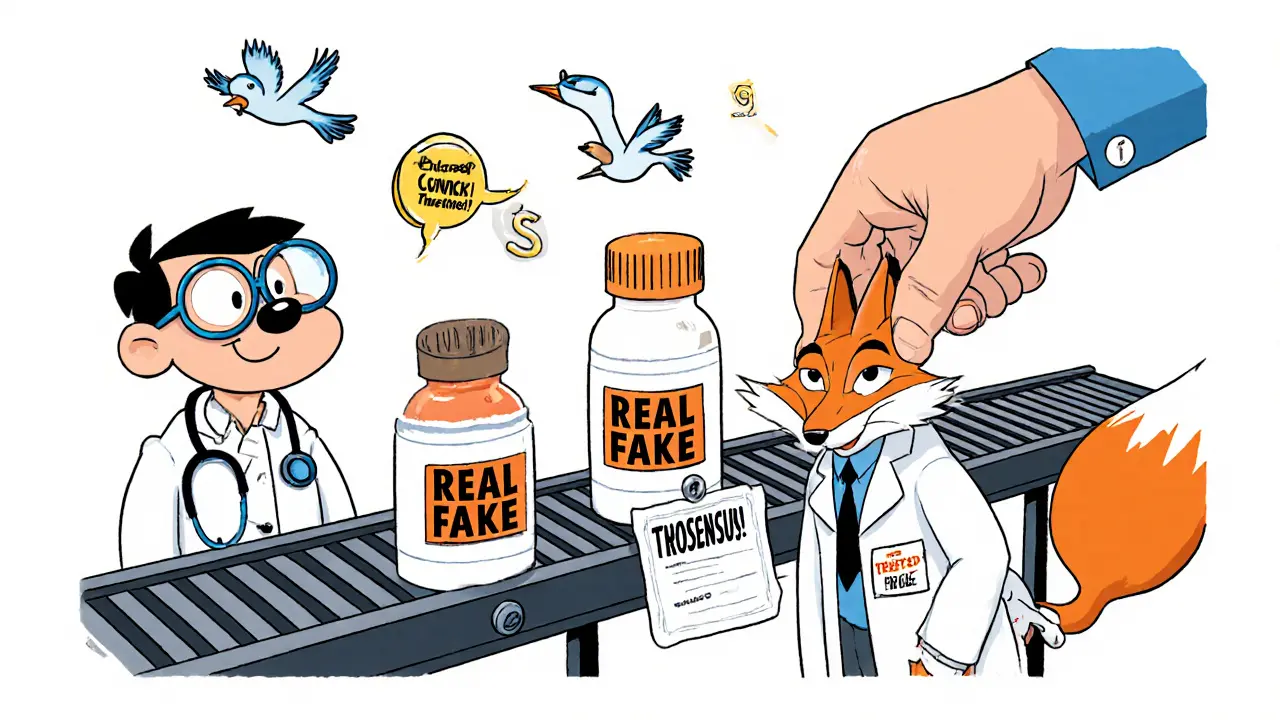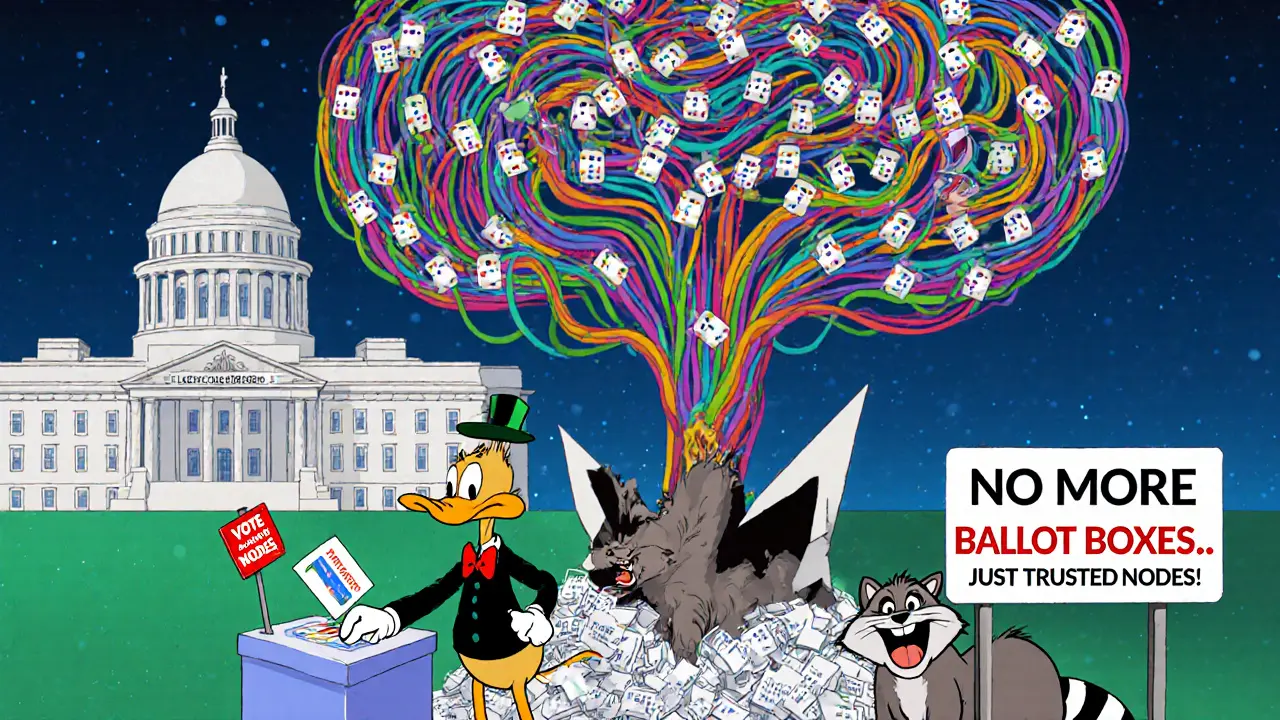Understanding DLT: Beyond Blockchain Applications
 Nov, 17 2025
Nov, 17 2025
Distributed Ledger Technology isn't blockchain. That’s the first thing you need to understand. Most people think they’re the same thing - but that’s like saying all cars are Teslas. Blockchain is just one way to build a distributed ledger. DLT is the bigger idea: a way to store data across many computers, without a central boss telling everyone what to do. It’s not about crypto. It’s not even about money. It’s about trust - built into the system itself.
What DLT Actually Does
Think of a shared spreadsheet. Not one you edit on Google Docs with five people. Think of hundreds of people, scattered across countries, each holding an identical copy. Every time someone adds a new row, everyone else’s copy updates automatically - but only if the network agrees it’s valid. No bank. No government. No middleman. Just math and rules. That’s DLT. It’s a database that doesn’t live in one place. It’s copied, synced, and verified by every participant. If someone tries to change an old entry, the network spots it. The data is locked in with cryptography. Once it’s recorded, it’s nearly impossible to alter without being caught. This isn’t theory. The U.K.’s Combined Online Information System uses a DLT system similar to BitTorrent’s original peer-to-peer model to manage public records. Hospitals, logistics firms, and even small towns are testing it to track medicine shipments, verify voter identities, or record land titles. The goal? Cut fraud. Cut delays. Cut the need for expensive audits.How DLT Differs From Blockchain
Blockchain is a type of DLT - but not all DLTs are blockchains. Here’s where they split:- Structure: Blockchains force data into linear chains of blocks. DLT can use trees, graphs, or even directed acyclic graphs (DAGs). No chain required.
- Consensus: Bitcoin uses proof-of-work - energy-heavy, slow. DLT systems can use proof-of-stake, practical Byzantine fault tolerance (PBFT), or even voting systems that are faster and use less power.
- Tokens: Blockchains often need coins or tokens to pay for transactions. DLT doesn’t. You can run a private DLT for a bank or supply chain with zero digital currency involved.
- Scalability: Blockchain networks like Ethereum or Bitcoin process maybe 10-30 transactions per second. Some DLT systems, like those built on Hyperledger Fabric, handle thousands per second because they don’t need global consensus for every change.
Why This Matters for Real Businesses
If you’re running a logistics company, you care about one thing: proving a shipment left point A and arrived at point B - and that no one tampered with the paperwork. Traditional systems rely on paper bills of lading, emails, and manual checks. It takes days. Mistakes happen. Fraud is common. With DLT, every step is recorded in real time. The warehouse scans the box. The truck driver signs off. The customs agent verifies. Each action is added to the ledger. Everyone sees it. No one can delete it. No one can fake it. Same with pharmaceuticals. The FDA estimates 1 in 10 medicines worldwide are counterfeit. DLT can track a pill from factory to pharmacy. If a bottle’s serial number shows up in two places at once? The system flags it immediately. No blockchain. Just a secure, shared record. Even voting systems are testing DLT. Estonia uses a version of it for digital voting. Voters authenticate with ID cards. Their vote is written to a distributed ledger. No central server to hack. No ballot boxes to steal. Just immutable, verifiable records.
Who’s Building It - And Why
You won’t hear much about DLT in crypto Twitter. That’s because it’s being built quietly - in boardrooms, not crypto forums. R3, Hyperledger, and the Ethereum Enterprise Alliance are consortia of banks, tech firms, and governments building private DLT networks. They’re not trying to replace Bitcoin. They’re trying to replace Excel spreadsheets, email chains, and paper files. LCX, a regulated tech provider in Liechtenstein, points out that blockchain requires trusted third parties to prevent double-spending. DLT doesn’t. In a private DLT, participants are known and vetted. You don’t need proof-of-work to stop fraud - you just need rules and identity checks. This is why companies like IBM and Microsoft are pushing DLT tools. They’re selling enterprise software, not crypto coins. Their clients don’t want to mine. They want to reduce paperwork. Cut costs. Avoid lawsuits.What DLT Can’t Do
DLT isn’t magic. It doesn’t fix bad processes. If your company has sloppy data entry, DLT will just make bad data permanent. It also doesn’t solve legal disputes. If two parties disagree on what was recorded, the ledger doesn’t decide - courts do. It’s also not anonymous. Private DLTs know who’s on the network. Public DLTs? They’re pseudonymous at best. If you’re looking for total secrecy, DLT isn’t the answer. And yes - it’s still expensive to set up. You need IT teams, legal reviews, and integration with old systems. Many pilots fail because companies think DLT is a plug-and-play solution. It’s not. It’s a redesign.
Where DLT Is Headed
The next five years will see DLT move out of finance and into public services. Think: birth certificates, university degrees, car registrations. Imagine getting your driver’s license digitally - stored on a DLT. You show it to a cop with your phone. They scan it. The system checks with the DMV’s ledger. No card. No database hack. No forgery. Energy efficiency will improve. New consensus methods like proof-of-authority and federated voting will replace energy-guzzling models. Interoperability standards will let different DLTs talk to each other - a bank’s ledger talking to a shipping company’s ledger without needing a middleman. The biggest shift? The word “blockchain” will fade. People will stop saying “blockchain for supply chains.” They’ll just say “DLT.” Because once you stop thinking about blocks and coins, you start seeing the real potential: a world where trust isn’t given - it’s built into the system.Is DLT Right for You?
Ask yourself these questions:- Do you have multiple parties who need to share data but don’t fully trust each other?
- Are you spending too much time reconciling records between systems?
- Is fraud or errors costing you money or reputation?
- Do you need to prove something happened - without relying on a single company’s database?
Is DLT the same as blockchain?
No. Blockchain is one type of DLT, but not all DLTs are blockchains. DLT is the broader category - it includes any system that stores data across multiple nodes with consensus. Blockchain adds a specific structure: data must be chained in blocks, often using proof-of-work. DLT can use trees, graphs, or voting systems without blocks or crypto tokens.
Do I need cryptocurrency to use DLT?
No. Many DLT systems - especially private ones used by banks, governments, and supply chains - don’t use any cryptocurrency at all. Tokens are optional. You can build a secure, distributed ledger for tracking medical supplies or voting records with zero digital coins involved.
Is DLT more secure than a regular database?
It’s more tamper-resistant. A traditional database has one owner - if that server gets hacked, data can be altered or deleted. DLT copies data across many nodes. To change a record, you’d need to hack most of them at once - which is nearly impossible. But DLT doesn’t protect against bad input. If you enter wrong data, it’s still wrong - just permanent.
Can DLT be private?
Yes. Most enterprise DLT systems are private. Only approved participants - like members of a bank consortium or a group of suppliers - can join and view data. Public DLTs exist, but private ones are far more common in business. You control who sees what, while still keeping the ledger distributed and secure.
Why are banks using DLT instead of blockchain?
Because blockchain’s proof-of-work is too slow and energy-heavy for daily banking. Banks need speed, privacy, and control. DLT lets them build networks where trusted partners verify transactions using faster consensus methods - like PBFT - without needing miners or crypto tokens. It’s practical, not ideological.
What’s the biggest mistake companies make with DLT?
They think it’s a plug-and-play fix for broken processes. DLT doesn’t fix bad data, lazy staff, or unclear rules. If your team still emails PDFs and manually reconciles spreadsheets, DLT will just digitize the mess. You need to redesign the process first - then use DLT to lock it in.
Is DLT just hype?
Some of it is. But real deployments are growing. The U.K. government uses it for public records. Major banks run DLT trade finance networks. Walmart tracks food supply chains with it. The hype around crypto distracted people from the real use cases - but those cases are working, quietly, and scaling.